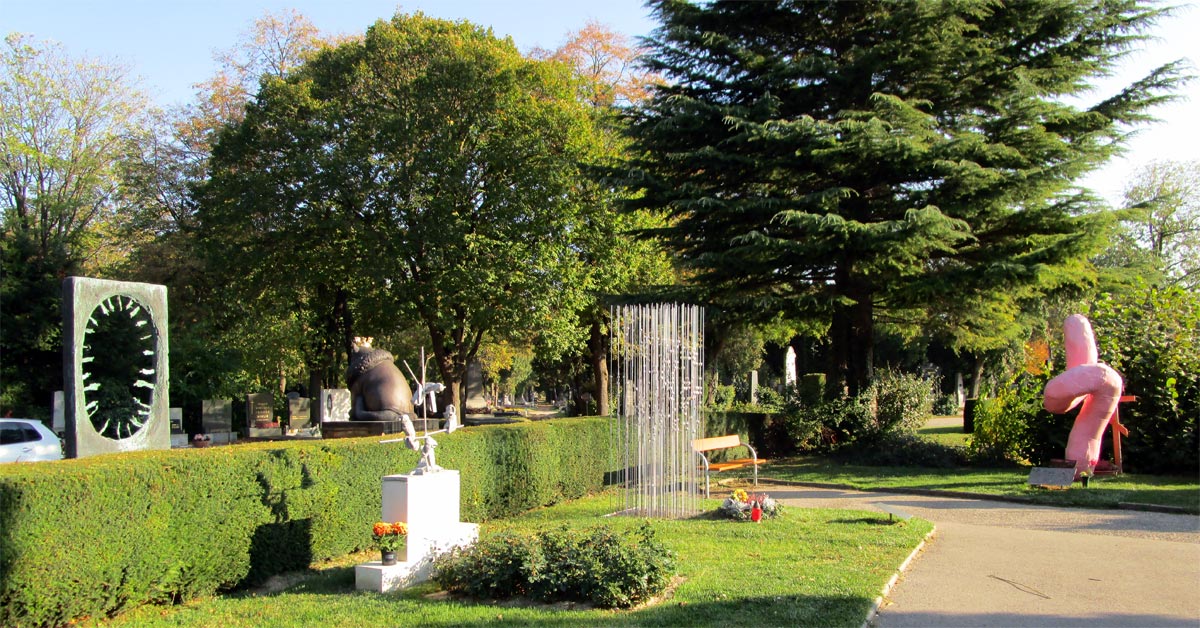

24 October 2018  Three days ago, I walked through one of the largest cemeteries worldwide, the Zentralfriedhof (Central Cemetery) in Vienna. It was opened on All Saints' Day on 1 November 1874. More people are buried here than currently living in Vienna. But the city could even grow further! The cemetery has enough place - for all confession; from its beginning, the graveyard is explicitly interconfessional. I walked from the cemetery's main entrance to the honorary graves. At first, I found mainly graves of men such as Beethoven or Schubert, Strauss; women seemed to be almost not existent in our memory as 'honorary' persons. But then, I saw the grave site by politician Johanna Dohnal (she worked on basic changes in law so that women could start a self-determined life) or her political successor Barbara Prammer. But aren't there any female counterparts to Beethoven or Brahms respectively women who have produced actively culture in the creative fields? The men : women relation I found at the Central Cemetery is also reflected at the website of Friedhöfe Wien where famous artists buried at graveyards in Vienna are listed: Eight entries (among them Gustav Klimt, Egon Schiele,...) in sum, one of the entries is female; makes a relation of 7 : 1. (Source checked again today: friedhoefewien.at) I walked further because I knew this can't be everything. There must be more honor for women manifested at this graveyard! Then I came to an area which looks like a modern art sculpture garden (picture below). And really, here I've found the graves of the once called 'world's most beautiful woman', Hollywood actress and inventor (delivered technological basics for the functionality of smart phones, tablets,... like Bluetooth, Wi-Fi or GPS - honored by Google Doodle) Hedy Lamarr (born 1914 in Vienna) and internationally important artist Maria Lassnig (born 1919); according to Tate, Lassnig is "one of the twentieth century's most original painters". At Maria Lassnig's grave, a sculpture similar to an antenna with paint tube-figures is on view; the tubes make think of her figurines of a female sex god 'Sexgöttin' from the late 1970s (more info with picture). It's like the painter is still sending her message of raising awareness for the self-determined female body. Beneath Maria Lassnig's grave, Hedy Lamarr found her last resting place; well, the half of her ashes. The other half was spread by her family at Am Himmel, Wienerwald in Vienna. It would become a long story to recapitulate what happened after her death. Not enough that she traveled 1937 around the half world from Vienna over London to US to continue her work as actress. When she died in 2000, her ashes were according to an article by TAZ several years on-hold caused by an accident of the Austrian bureaucracy; TAZ names it in the article a 'long-standing posse'. But back to the art work at the grave. The sculpture by Viennese designer Christian Thomas shows 88 balls representing Hedy Lamarr's patent for frequency hopping and "when viewed head-on, the dot matrix resolves into a pixelated version of Lamarr’s visage..." (cited from the very detailed description by Hyperallergic). Next time when I visit the Central Cemetery, I will check this position to see Lamarr's face. Image, view at an area with graves of Austrian artists, from left: The grave sculpture by artist Gunter Damisch, the cat is signature for caricaturist Manfred Deix, in front of the cat the antenna with tubes by Maria Lassnig, the frequency hopping sculpture of Hedy Lamarr's grave, the pink sculpture by Austrian artist Franz West. The relation men : women with 3 : 2 at this image is more balanced than the overall Central Cemetery honorary-grave statistics calculated after gender very probably delivers. |